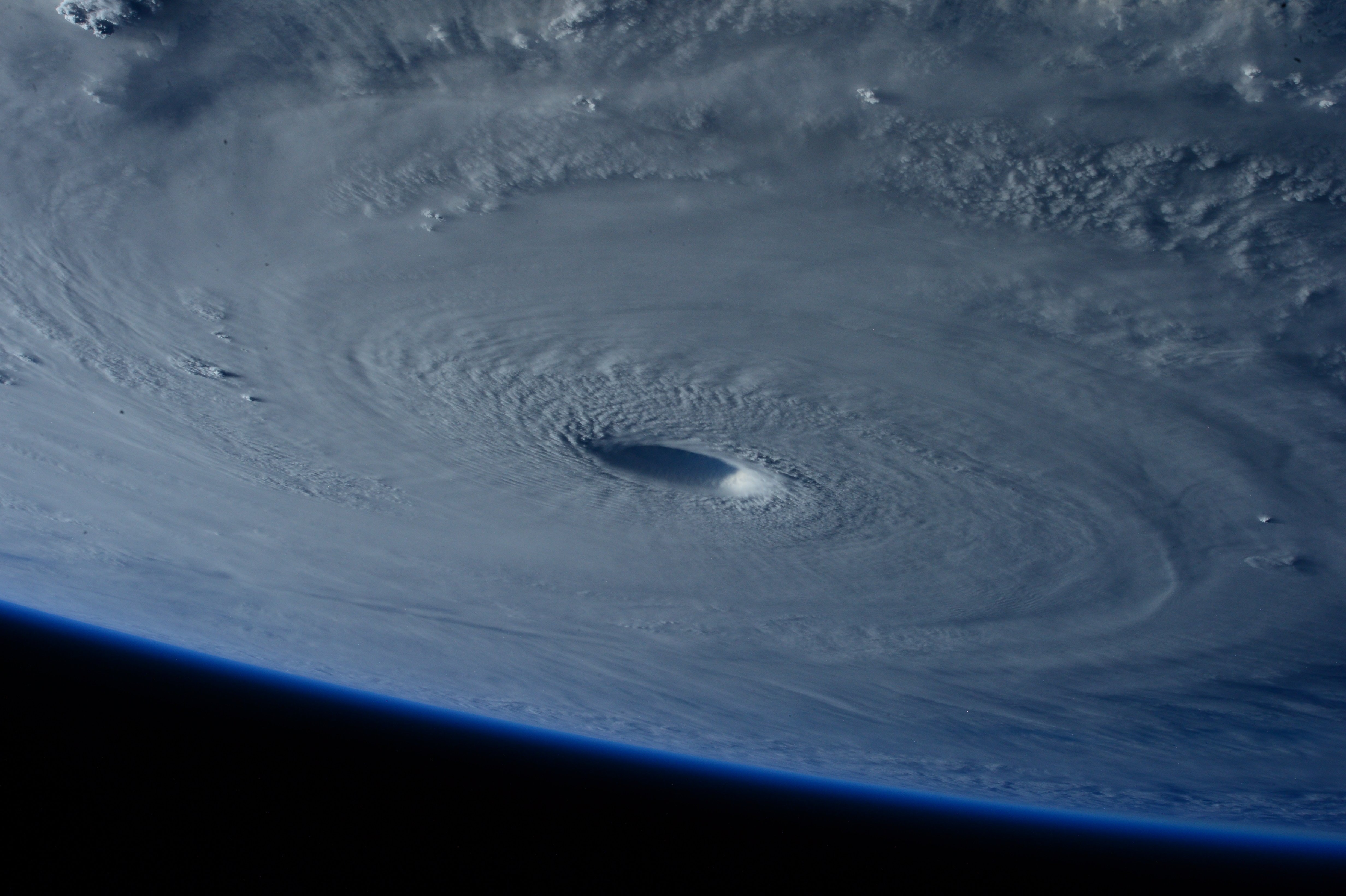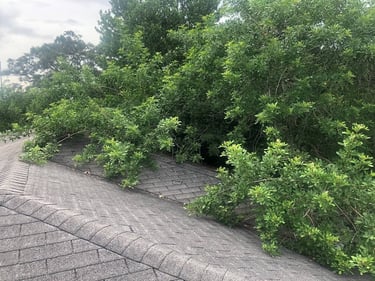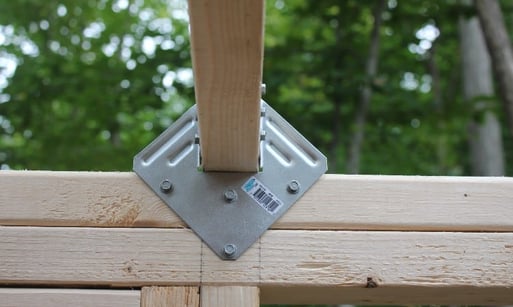Hurricane Season 2025: Is Your Roof Ready?
June , 2025 | 5 min. read

While hurricanes may feel like a regular guest here in Florida, the destruction they bring never loses its sting. And as we head into the thick of the 2025 hurricane season, many homeowners across the state are once again feeling that familiar sense of unease. To make matters more stressful, non-renewal notices from insurance companies are still being delivered left and right.
So, whether Florida is your permanent home or just your sandy escape, the big question remains: can your roof handle what’s coming? At RoofCrafters, we’ve been helping homeowners with hurricane prep and relief since 1994. We’ve seen just how intense the “before and after” can be. The good news? Many major issues can be avoided with some proper planning and preparation.
Despite the sunny fall skies we’ve been enjoying, all it takes is one shift in pressure for Mother Nature to remind us who’s boss. If a storm’s brewing, you’ll want to be ready. In this article, we’ll walk you through how to hurricane-proof your roof and protect your home before things get chaotic.
Why Do I Need to Hurricane-Proof My Roof?
Sure, hurricane prep should start long before a storm is on the radar. But if you’re new to Florida (or new to the whole hurricane experience), there might be a few crucial things you’re unaware of as the clock ticks down.
For lifelong Floridians, boarding up windows is second nature when a storm is on the way. But what about your roof? Many homeowners focus on windows and doors and forget all about what’s above their heads. If the roof is damaged, the rest of your home is immediately exposed to wind, rain, and flying debris. Even small cracks or leaks can turn into major issues under hurricane-force winds, leading to water damage, ruined belongings, and unsafe conditions for your family.
Whether you’re a seasoned storm veteran or a first-timer, one thing is for sure: just because hurricanes are common doesn’t mean we should treat them casually. Your roof deserves a spot at the top of your hurricane prep checklist.
How to Hurricane-Proof Your Roof
Now that you know why hurricane-proofing your roof is critical, let’s dive into how to do it. If a hurricane is headed your way, here are a few last-minute (and some longer-term) steps you can take to give your roof a fighting chance:
- Install roof straps
- Trim low-hanging branches
- Clear your gutters and drainage systems
- Keep a tarp handy
Installing Roof Straps
When it comes to the best option for hurricane roof preparation, roof straps are at the frontline. While installing roof straps is something that should be done well in advance of hurricane season, it reigns supreme as the most important step in storm preparation. Roof straps are metal ties that keep your roof trusses, or framework attached to your home.
They are an evolving technology that advances each year and are extremely important in hurricane preparedness. These metal ties or straps go over the rafters of your roof and essentially hold your ceiling and roof together, thus making it more difficult for your roof to be removed due to hurricane-strength winds.
Photo Credit: Plasticine House
So, how do you install roof straps? Newer homes in hurricane-prone areas tend to already have them installed, but if you’re living in an older home, you may have to install them yourself. It may seem like a daunting DIY, but roof straps can potentially save your roof from hurricane-force winds helping you to avoid repairs or replacements in the future.
Your trusted roofing contractor will be happy to assist in your roof strap project, but if you’re endeavoring into a DIY project, hurricane straps should be attached at the points where the rafters come over the studs.
By using a twisted strap, you’ll be able to attach the rafter to the stud for a stronger foundation. Now, if your studs and rafters don’t align, you’ll need to attach structural ties to the top plate and joists, as well as the rafters to the top plate.
Trimming Trees

Fallen tree branches and even trees themselves are very common occurrences during hurricanes. Strong hurricane winds are capable of nearly anything, including uprooting trees in front of your home and causing large branches to come crashing down on your roof.
In hurricane-prone areas, It’s important to consider having any large trees near your home removed. However, if that’s not possible, be sure to have any large branches or limbs trimmed before hurricane season.
Clearing Debris
Hurricanes bring more than just intense winds. If a hurricane’s due to hit your area, expect a torrential downpour. That being said, your gutters must be properly prepared beforehand. Be sure to clear all debris clogging your gutters and drainage systems. If you don’t, you risk flooding and potential roof leaks, leading to even more damage than the hurricane itself would cause. So, be sure to give your gutters a little TLC before the storm hits.
Tarping

It may go without saying, but for those who don’t know, having a tarp on hand during hurricane season is a staple. The more tarps you have, the better. Some homeowners like to put tarps over their roofs which act as a protective layer for their shingles or tiles. Tarps are versatile and can be used in a variety of places and ways. Putting tarps over windows and other vulnerable spots on your roof or home are great ways to prevent any detrimental hurricane damage.
Should I Hurricane-Proof My Roof?
In short: absolutely. Taking these precautions before a storm makes landfall could mean the difference between a quick cleanup and a full rebuild. And if there’s one thing we really want you to walk away with, it’s the importance of a preseason roof inspection.
Knowing the condition of your roof before hurricane season ramps up is essential. A trusted roofing contractor can help you spot weak points and make any necessary repairs in advance, saving you major money and stress later.
If you’re not sure where to start, we’ve got you covered. Download our guide: “Top 10 Most Critical Questions to Ask Your Roofing Contractor” to find a reputable professional near you.
 In the meantime, feel free to browse our Learning Center for more storm-season insights. We recommend starting with: “Does Insurance Cover Storm Damage to a Roof?” to get a better understanding of what’s covered and what might come out of your pocket if disaster strikes. Stay safe, stay dry, and don’t wait until it’s too late to schedule your inspection! RoofCrafters is here when you need us.
In the meantime, feel free to browse our Learning Center for more storm-season insights. We recommend starting with: “Does Insurance Cover Storm Damage to a Roof?” to get a better understanding of what’s covered and what might come out of your pocket if disaster strikes. Stay safe, stay dry, and don’t wait until it’s too late to schedule your inspection! RoofCrafters is here when you need us.
My name is Cassie, and I’m the Content Manager here at RoofCrafters. I was born and raised in Chicago, Illinois, and made my way out to Florida post-college graduation. I’m incredibly passionate about writing and creating valuable content that helps others with the collaboration of my marketing team. When I’m not working, I enjoy shopping (a little too much), spending time at the beach, and reading!



